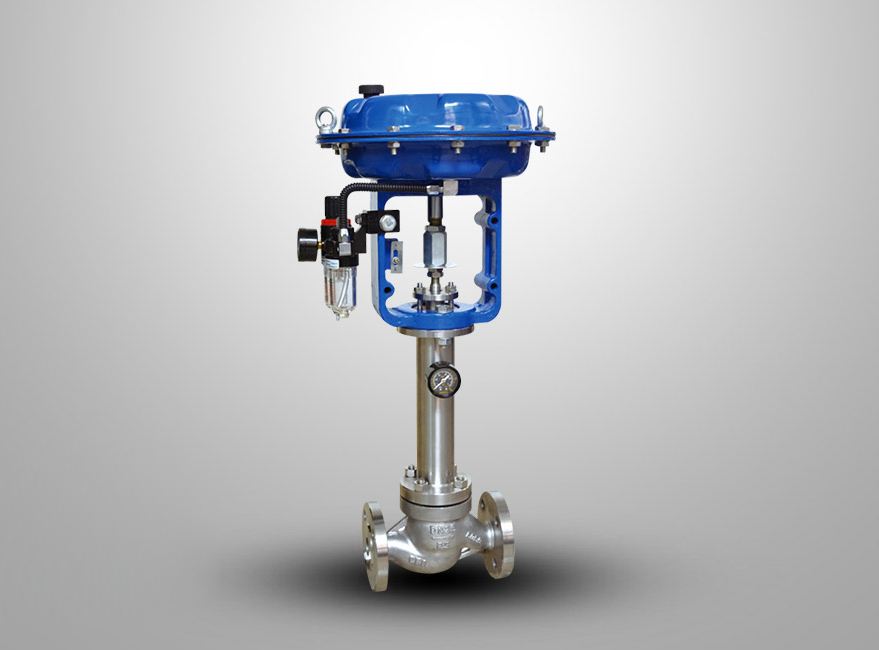Working principle of cylinder control valve
Cylinder type regulating valve uses compressed air as the power source to Cylinder is an actuator, and uses electrical valve positioners, converters, solenoid valves, position-keeping valves and other accessories to drive valves to achieve switching or proportional Adjustment, receiving control signals from the industrial automation control system to complete the adjustment of various process parameters such as flow, pressure, temperature, etc. of the pipeline medium. The characteristics of pneumatic control valves are simple control, fast response, and intrinsic safety, without the need for additional explosion-proof measures.
Therefore, sometimes air-open valves are also called Fail to Close FC. The action direction of the air to close type is exactly opposite to that of the air to open type. When the air pressure increases, the valve moves in the closing direction;when the air pressure decreases or disappears, the valve moves in the opening direction or until it is fully open. Therefore, it is sometimes called Fail to Open FO. The air opening or air closing of a pneumatic control valve is usually achieved through the positive and negative effects of the actuator and the different assembly methods of the valve structure.

Basic error of cylinder control valve
1. Basic error
Input the specified input signal smoothly into the actuator (or positioner) in the increasing or decreasing direction, measure the stroke value corresponding to each point, and calculate the actual signal -The maximum value of the error at each point between the stroke' relationship and the theoretical relationship is the basic error. The inspection points should include at least five points of the signal range: 0%, 25%, 50%, 75%, and 100%. The basic error of the measuring instrument should be less than 1/4 of the basic error limit of the valve being calibrated.
2. The hysteresis method is the same as 1. The large difference between the forward and reverse strokes measured on the same input signal is the hysteresis.
3. The consistent deviation method is the same as 1. The basic error at the lower line of the signal is the starting point deviation, and the basic error at the upper line of the signal is the end point deviation.
The above isThe working principle of the cylinder control valve and the basic error of the cylinder control valveContent introduction, want to know moreCylinder< /a>Related information can be viewed at www.diancifa.cc.






 WhatsApp: +8615857777578
WhatsApp: +8615857777578